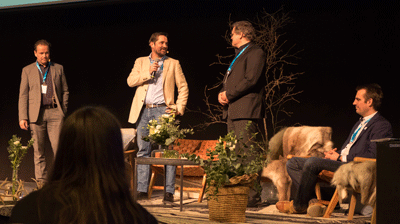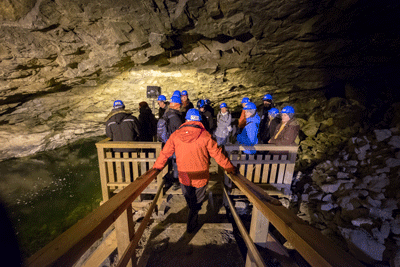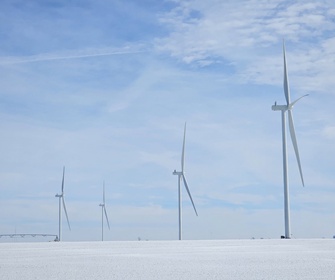 On 6 and 7 February 2018, the 10th Winterwind International Wind Energy Conference was organised by the Swedish Windpower Association in Åre, Sweden. Winterwind is an annual conference dedicated to the development and deployment of wind energy systems in areas which are prone to cold climate effects, such as accretion of ice on blades, lubrication problems of gearboxes, ice throw, aerodynamic and mechanical imbalances caused by icing, etc. When dealing with wind energy in cold climates it is essential to distinguish between two types of cold climate issues: very low temperatures combined with dry air on the one hand, and ‘not so low’ temperatures combined with various types of ice build-up on rotors and sensors depending on the water content of the atmosphere on the other hand.
On 6 and 7 February 2018, the 10th Winterwind International Wind Energy Conference was organised by the Swedish Windpower Association in Åre, Sweden. Winterwind is an annual conference dedicated to the development and deployment of wind energy systems in areas which are prone to cold climate effects, such as accretion of ice on blades, lubrication problems of gearboxes, ice throw, aerodynamic and mechanical imbalances caused by icing, etc. When dealing with wind energy in cold climates it is essential to distinguish between two types of cold climate issues: very low temperatures combined with dry air on the one hand, and ‘not so low’ temperatures combined with various types of ice build-up on rotors and sensors depending on the water content of the atmosphere on the other hand.
By Jos Beurskens, SET Analysis, the Netherlands
The first conference, in 2008, attracted some 70 participants, while the conference now attracts over 300 participants. In addition, at Winterwind 2018, four large wind turbine manufacturers were actively participating as well as a number of service suppliers offering expertise and products including pre-construction assessments, such as establishing icing probabilities and output losses caused by icing, atmospheric measuring equipment and de-icing components for blades. The increased interest in cold climate issues reflects the sizable wind energy market in cold climate areas. According to VTT in Finland, at present more than 25% of all installed global wind capacity is in cold climate areas and is likely to remain at that level.
 The spectrum of cold climate topics which have been addressed during Winterwind’s 10 years of existence include ice accretion modelling and measurements and consequences of ice build-up in terms of energy output losses, dynamic loading and O&M. Furthermore, anti-icing and de-icing technologies, foundation design, installation, environmental aspects, health, safety and environment aspects and regional impacts on the economy and recreational activities were highlighted. This year the participants learned about highlights in the modelling of icing probability and measurement results for model verification, the industries’ (thermal) de-icing solutions and progress in the development of impact resistant ice-phobic coatings, the ‘holy grail’ of anti-icing technologies, icing probability as a function of site altitude and geographic positions (terrain and distance to ocean) and many more interesting and relevant topics.
The spectrum of cold climate topics which have been addressed during Winterwind’s 10 years of existence include ice accretion modelling and measurements and consequences of ice build-up in terms of energy output losses, dynamic loading and O&M. Furthermore, anti-icing and de-icing technologies, foundation design, installation, environmental aspects, health, safety and environment aspects and regional impacts on the economy and recreational activities were highlighted. This year the participants learned about highlights in the modelling of icing probability and measurement results for model verification, the industries’ (thermal) de-icing solutions and progress in the development of impact resistant ice-phobic coatings, the ‘holy grail’ of anti-icing technologies, icing probability as a function of site altitude and geographic positions (terrain and distance to ocean) and many more interesting and relevant topics.
The proceedings are available here: http://windren.se/WW2018/.
For those who want to learn more about wind energy in cold climates, the IEA Wind Task 19 report ‘Available Technologies of Wind Energy in Cold Climates’ 2016 edited by Lehtomäki, VTT, Finland, is a must. It provides a comprehensive overview of all issues, including a description of state-of-the-art technologies.








